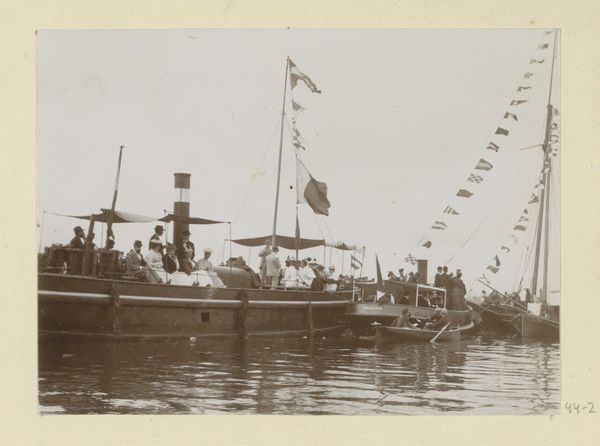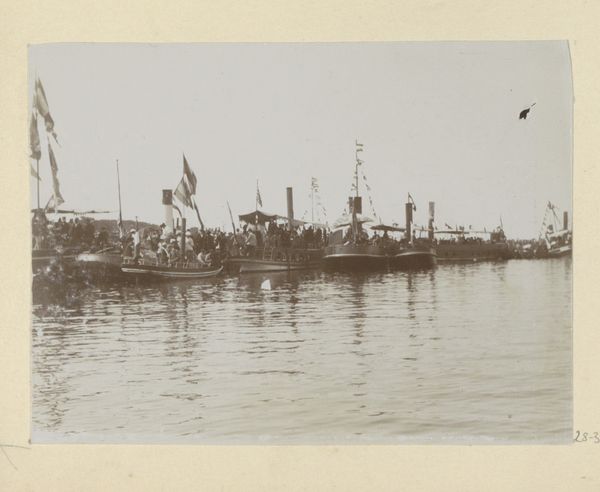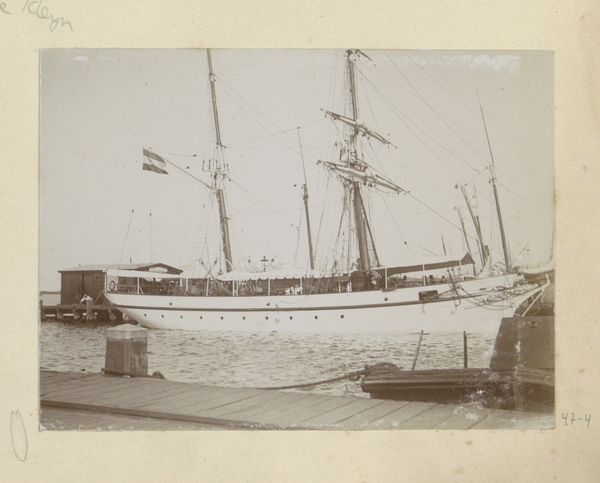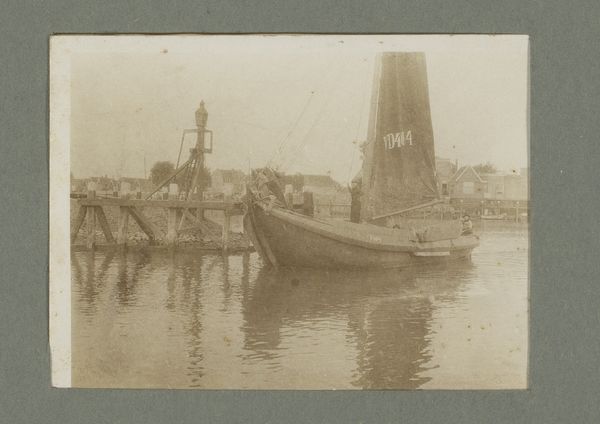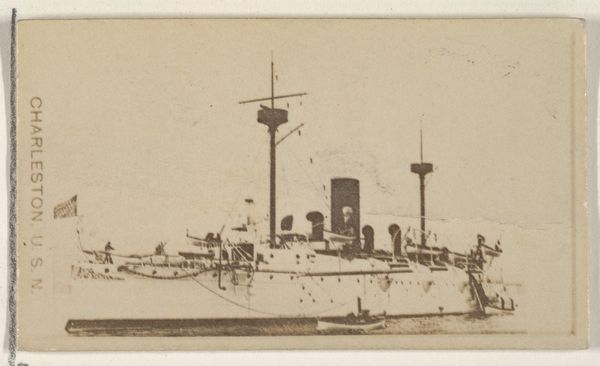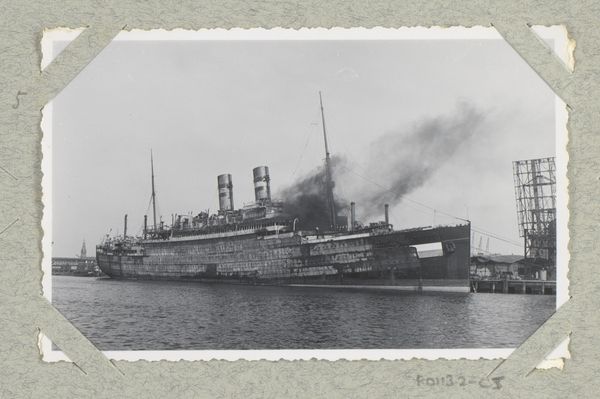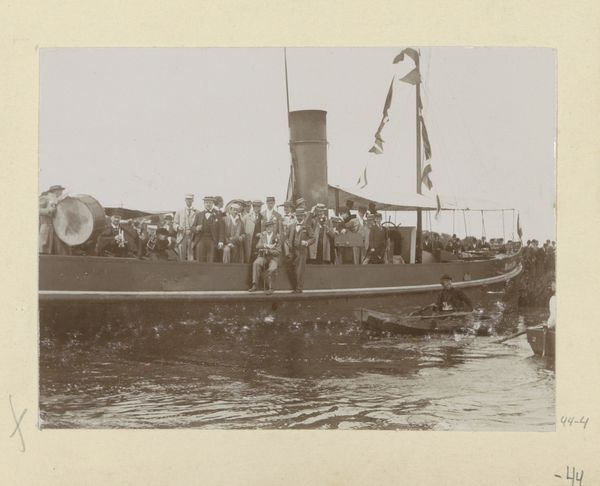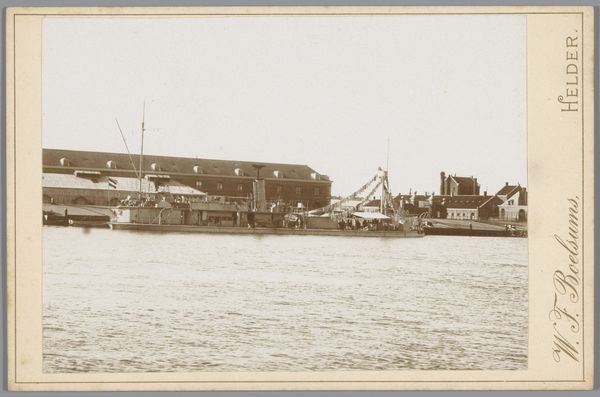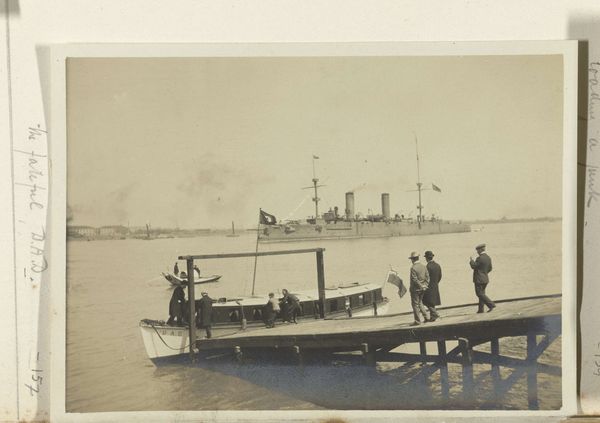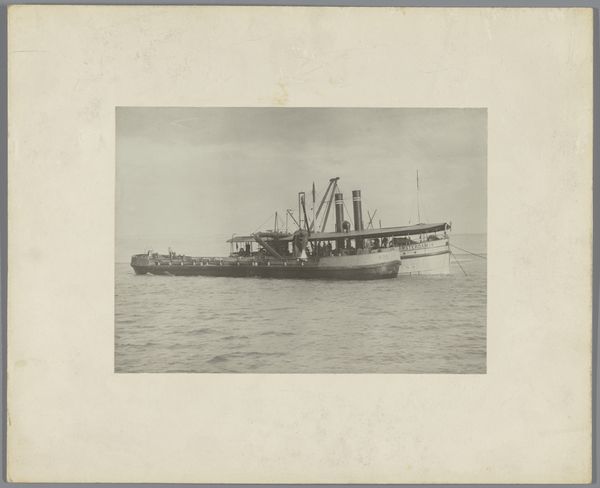
Mijnenveger Alders van de 9. Räumbootsflottille van de Duitse Kriegsmarine in de Nieuwehaven of Koningin Wilhelminahaven te Vlaardingen 1941 - 1945
0:00
0:00
anonymous
Rijksmuseum
print, photography, gelatin-silver-print
#
still-life-photography
# print
#
landscape
#
photography
#
gelatin-silver-print
#
modernism
Dimensions: height 61 mm, width 88 mm
Copyright: Rijks Museum: Open Domain
Curator: This gelatin silver print, taken by an anonymous photographer sometime between 1941 and 1945, captures the Mijnenveger Alders, a minesweeper of the German Kriegsmarine, in Vlaardingen. Editor: It's immediately striking, this almost stark presentation. The harsh blacks and whites feel incredibly loaded. It’s a landscape imbued with power, but also with a tangible tension. Curator: Exactly. It’s difficult to divorce this image from its historical context. Think about the role of photography during wartime, particularly from the perspective of the occupying force. How does that influence our reading of this supposedly objective "landscape"? Editor: For me, knowing that it was taken by an anonymous photographer operating under the Kriegsmarine is pivotal. It isn't simply documenting; it’s performing a certain kind of authority and potentially even normalizing the occupation, showing off this minesweeper. I immediately read the image as something deeply ideological. What message was intended? Curator: The question of intent is fascinating. On one level, it serves as propaganda, a display of military strength. But let's consider what this particular type of vessel, the minesweeper, tells us. What narrative is built around maritime power and political agendas when considered against the historical backdrop of a colonized country such as the Netherlands during that time period? What power imbalances is it reflective of? Editor: Precisely, the chosen subject subtly reinforces German control. The minesweeper is actively clearing the way. It represents dominion, ensuring waterways remain accessible for their purposes. There’s a violent, proactive element, even in this seemingly calm, still scene. Curator: I also find the perspective interesting. The vessel is facing us, filling much of the frame. This forces the viewer into a direct confrontation. Editor: Making us, in some ways, complicit in viewing this symbol of occupation. I also noticed how little space is dedicated to what seems like daily life, it is dominated by this ship, by the suggestion of imposing maritime and thus terrestrial rule. Curator: The photographic medium itself is interesting to consider. It purports objectivity but cannot escape the politics of its production. These sharp lines of the modernist aesthetic are interesting too, a brutal beauty of geometry. Editor: It’s unsettling how beautiful this machine of war appears within this artistic approach, a harsh elegance. Considering this work forces one to consider not just history, but the ethics of representation and viewership as well. Curator: Absolutely. Ultimately, this gelatin-silver print prompts a crucial interrogation of power dynamics, image making, and how the most innocuous landscapes can become potent political statements.
Comments
No comments
Be the first to comment and join the conversation on the ultimate creative platform.
